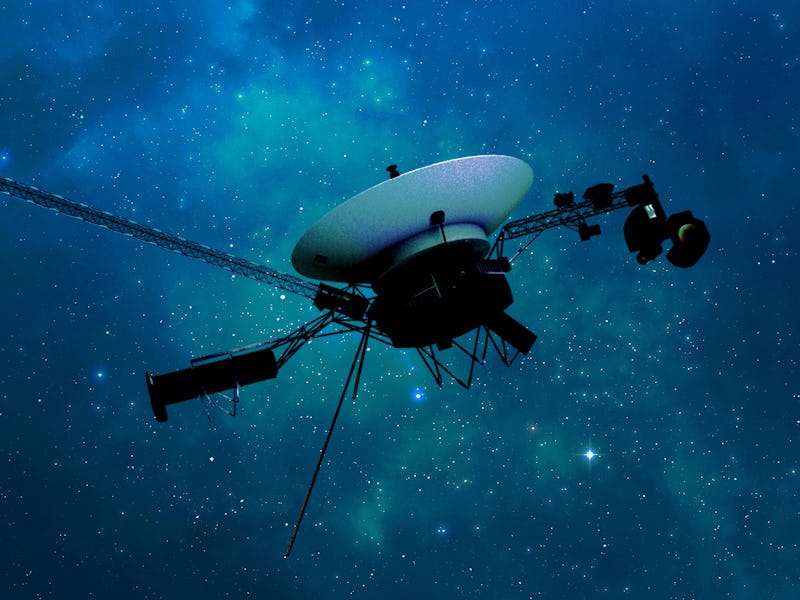Voyager 1 Just Sent Its First Coherent Message Back to NASA In Months
A clever programming fix has cured the spacecraft's electronic aphasia.

After 5 months of electronic aphasia, NASA’s Voyager 1 spacecraft can communicate intelligibly again, thanks to a clever programming fix from its engineers.
The Voyager 1 team received a clear message about the spacecraft’s status on April 20, and they expect to have science data flowing again in the next few weeks. This comes a few months after Voyager program manager Suzanne Dodd said restoring the spacecraft’s ability to talk to its operators on Earth would take a miracle.
“In the last decade, I have learned from Voyager that there is (almost) always a way around a problem, no matter how dire it is,” Voyager mission assurance manager Bruce Waggoner told Inverse in March. “You just have to think ‘outside the box’ when people tell you not to do so.”
Voyager 1 entered interstellar space in 2012, and this illustration shows what it might look like out there (although it’s probably a lot darker in reality).
Flipped Bits and Electronic Gibberish
Back in November, a passing cosmic ray hit one of Voyager 1’s three onboard computers, and it “flipped a bit” (or altered a tiny unit of data) in the spacecraft’s Flight Data Subsystem. This unit of data happened to be a key piece of the code that tells Voyager 1 how to package up science and engineering data, including information about its own condition, before sending the message to Earth.
Like the robot version of a person recovering from a stroke, Voyager 1 could receive and understand messages from home, and it could gather data to send back. But when it tried to “speak,” its data came out as a gibberish of random 0s and 1s.
Engineers at NASA realized that to fix the problem, they needed to reprogram Voyager 1 with the correct code. However, there wasn’t enough data storage space on the Flight Data Subsystem computer to hold it all. The programmers had to split the code into sections, which could be tucked into Voyager 1’s computer wherever there was room. Then include instructions about where to find each one.
On April 18, Voyager 1’s team transmitted the new code to the distant spacecraft. Then they waited. It took 22.5 hours for the data, moving at the speed of light, to cross more than 15 billion miles of space to reach Voyager 1, and then it took another 22.5 hours for Voyager 1’s response to cross the vastness of space and reach NASA’s Jet Propulsion Laboratory. But after a tense 45 hours, on April 20, the team downloaded Voyager 1’s message: a clear, understandable status update declaring that all was well with the intrepid space robot.
The Voyager 1 team will spend the next few weeks reworking the code that packages science data, and they expect Voyager 1 to return to sending back reports from the edge of the Solar System — ones its human operators can actually read.
Meanwhile, Voyager 2, a well-behaved space robot that hasn’t been in the news lately, is still cruising out of the Solar System on its own trajectory. NASA says it hopes to keep both missions gathering data and calling home until around 2035.